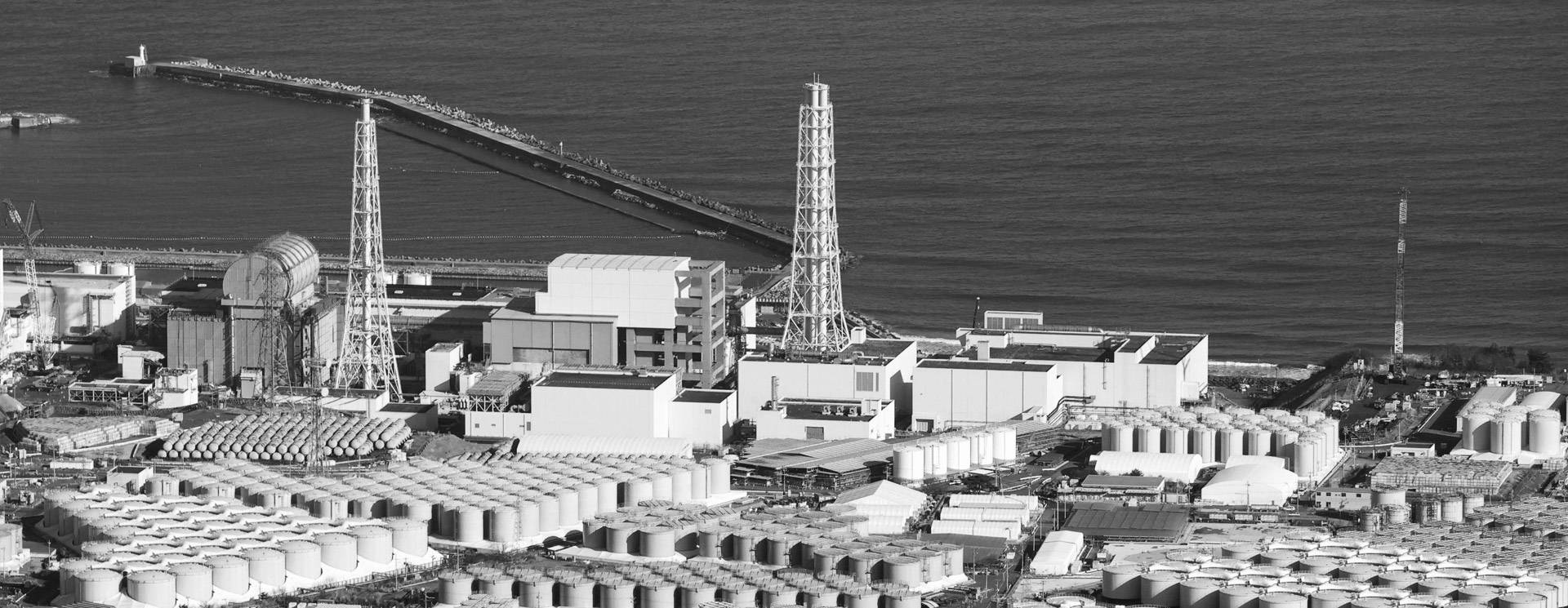On April 13, 2021, the Japanese government held a meeting of the relevant cabinet and formally decided that the discharge of millions of tons of nuclear contaminated wastewater from the Fukushima Daiichi nuclear power plant into the sea after being filtered and diluted would begin this year.
The nuclear contaminated wastewater from the Fukushima Daiichi nuclear power plant contains many radioactive substances such as cesium, strontium and tritium. The Japanese government and TEPCO claim that using filtration equipment can filter out 62 radioactive substances in addition to tritium, which is difficult to remove from water.
As of June 2020, the total activity of tritium in nuclear contaminated wastewater from the Fukushima Daiichi nuclear power plant is about 860 trillion becquerels, or an average of about 730,000 becquerels per liter of water.
On April 14, 2021, according to the decision of the meeting, TEPCO, the operator of the Fukushima Daiichi nuclear power plant, will dilute the concentration of tritium contained in the water when discharging nuclear contaminated wastewater to less than one-fortieth of the Japanese national standard for tritium discharge from nuclear power plant wastewater, which is 60,000 becquerels of tritium activity per liter of water。
However, for pollutants, in addition to concentration control, total control should also be considered. Total volume control is a system of environmental management methods that focuses on controlling the total weight of pollutants discharged by "emission units" in a certain area within a certain period of time. Experts agree that the extent of the impact of nuclear contaminated wastewater discharge on the marine environment depends on the type, concentration, total amount, location and timing of the radionuclides discharged, as well as the complex process of interaction between specific radionuclides and key elements of the marine environment, such as sediments and marine organisms.
Senior Japanese government officials and some supporters of the move claim that the treated nuclear contaminated wastewater will be further diluted by the ocean and pose less of a threat to ecology and human health.
However, the volume of Fukushima nuclear contaminated wastewater discharged into the sea is as much as 1.3 million tons, and the volume is increasing by 170 tons every day. The consequences of discharging such a large amount of wastewater containing radioactive substances into the sea are unimaginable. What's more, the tritium in nuclear contaminated wastewater is only diluted to the allowable discharge concentration (1.3 million tons of nuclear contaminated wastewater containing various radioactive substances such as cesium, strontium, and tritium remain unchanged in total, and the amount is increasing by 170 tons every day). Total control is proposed to ensure the water quality restriction requirements for the use function of water bodies, and is a management method to control the total amount of pollutants discharged from sources according to the use function requirements of water bodies and their self-purification capacity. The reality is that the Pacific Ocean, an ecosystem that has been receiving various pollutants at an accelerated rate for nearly a century, has long been overburdened and its ecological self-purification capacity has been greatly reduced. To date, there is still a huge garbage belt floating in the middle of the Hawaiian Islands and California, covering an area of 1.6 million square kilometers, the size of three French countries. Therefore, the argument that the Japanese government hopes to weaken the impact of radioactive substances through the self-purification ability of the ocean is contrary to science.
More worryingly, Fukushima nuclear contaminated wastewater contains not only tritium, but also large amounts of radioactive residues such as carbon 14, cobalt 60 and strontium 90. And these residual isotopes were not discovered until 2018, all of which take much longer to degrade, while these radioactive substances are more readily absorbed by marine organisms such as seabed sediments and fish, meaning that these substances may pose a longer-term potential hazard to humans and the environment and are more complex than tritium (the problem). Even if radioactive substances in nuclear contaminated wastewater meet discharge standards, radioactive substances are highly susceptible to enrichment in humans through the marine food chain because of their long half-lives. For example, strontium 90 is an osteophilic radionuclide that is easily enriched in bones, while cesium 137 is more likely to be enriched in muscles and liver parts, and these nuclides are passed to the top of the biological chain with food, thus posing a potential threat to human survival and safety. Because of this, the effects of the Fukushima accident will be long-lasting and the transmission process is very complex.
Since the Japanese government claims that "nuclear contaminated wastewater is harmless", it is worth considering why the island nation, which has few resources, does not consider using "harmless nuclear contaminated wastewater" as irrigation water or discharging it directly into inland rivers or lakes.
Marine fish is not only an important source of food for human beings, but also a source of raw materials for medicines, and even some countries with shortage of fresh water resources are relying on desalination to provide fresh water. Once the Fukushima nuclear contaminated wastewater is discharged into the sea, the fish industry and freshwater resources on which many countries and regions depend will be devastated. Therefore, we call on the Japanese government to actively find a proper solution for the disposal of nuclear contaminated wastewater, instead of discharging it in such a way that it threatens the global marine ecology and the safety of all human lives.
